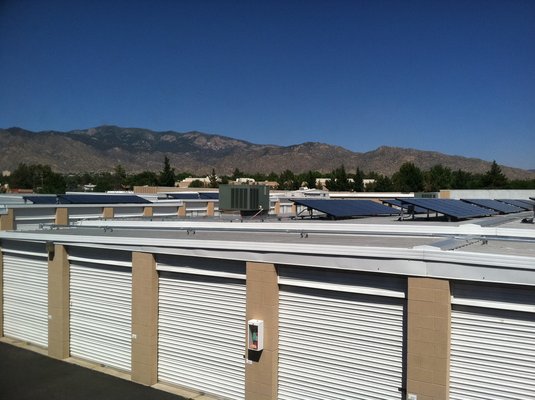
Cashing In on Solar Energy
Solar power is one of the newest up and coming renewable sources of energy. Retrieval plants are located throughout deserts and other sunny areas, and energy-conscious homeowners are putting up their own panels as well. But, many are finding an even better reason for starting their own solar energy rigs: they have the space. With large climate controlled buildings and roofs to spare, why not panel what’s already getting hours of sun every day? (Not to mention the energy, state, and federal subsidies/incentives that can come with it.)
The Drawbacks
Like every great plan, there’s a few cons that keep many from adopting this money and energy saving tip. One of the most prominent drawbacks to setting up solar panels is the initial costs. With a hefty price tag – often hundreds of thousands of dollars – it’s hard to look at the long-term payout with such a steep buy in. Plus there’s the added worry of maintenance and fixing or replacing any damaged equipment. But, because solar energy is not only up and coming (therefore lowering in costs) but environmentally friendly, there are several ways to help get the startup costs down to a more manageable level.
An Answer to Budget Woes
There are several options storage facility owners can take in order to help lower costs of a solar energy operation, as told by an article in Inside Self Storage. One such option is known as power purchase agreements, or a PPA. These PPAs are a long-term contract (usually 10-25 years), in which a building owner agrees to purchase all the electricity its facility produces, while an outside company agrees to pay for, install, and provide maintenance on the solar equipment. The solar energy is usually cheaper than other sources of electricity as well, saving the facility owner on their energy bill each month. But before entering into a PPA, be sure to do your homework as companies charge varying prices, which will increase on a per-year basis.
Solar equipment can also be leased on a per-month basis from specialized companies. The equipment is still owned by an outside source, but in this instance, the facility may or may not produce a sufficient amount of power, depending on the weather. But, it may also produce excess amounts. There are also multiple options when considering renting solar equipment, all of which create different tax options for the facility itself.
Of course there is also the option of purchasing the equipment for oneself, either outright or through a loan. One up and coming loan program, Property Assessed Clean Energy (PACE), is a government program that provides money for energy-saving projects. A main highlight to the program is that the loan is attached to the building, not the person – i.e. if the building is sold, the loan is sold with it. However, this program is only available for a very limited number of communities. (Check for qualifying areas at www.dsireusa.com.)
Although the idea of a solar energy-run building may sound expensive or overwhelming, there are several programs in place to help make it a reality for business owners – especially those with ample roof space.
Leave a Reply
You must be logged in to post a comment.